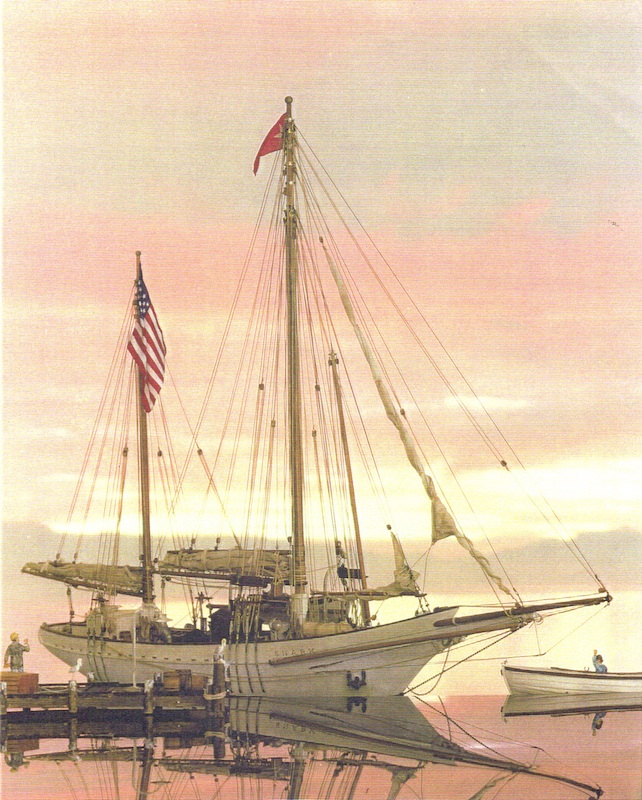The message: “Air Raid, Pearl Harbor. This is no drill” came at 0755 on December 7, as Japanese planes swept overhead in an attempt to cripple the Pacific Fleet. Taney, moored alongside Pier 6, Honolulu Harbor, stood to her antiaircraft guns when word of the surprise attack reached her.
The US Coast Guard Cutter Taney (originally launched as the Roger B Taney) was named for Roger Brooke Taney, who was born on March 17, 1777 in Calvert County, Maryland. Roger Taney was a lawyer and later served in President Andrew Jackson’s administration as Attorney General and Secretary of the Treasury – he was later appointed as Chief Justice of the US Supreme Court.
Roger B Taney, Coast Guard Builders No. 68, was laid down on May 1, 1935 at the Philadelphia Navy Yard. She was launched on June 3, 1936. The Roger B Taney departed Philadelphia on December 19, transited the Panama Canal from the 27th to the 29th, and arrived at her home port, Honolulu, Territory of Hawaiʻi, on January 18, 1937.
The Taney had arrived in the Pacific at a time when the US, and Pan-American Airways in particular, was expanding its commercial air travel capabilities. The “Clipper” flights across the Pacific to the Far East made islands like Hawaiʻi, Midway, Guam and Wake important way-stations.
In the 1930s, the US Bureau of Air Commerce (later known as Department of Commerce) was looking for islands along the air route between Australia and California to support trans-Pacific flight operations (non-stop, trans-Pacific flying was not yet possible, so islands were looked to as potential sites for the construction of intermediate landing areas.)
To affirm a claim on remote Pacific islands, international law required non-military occupation of all neutral islands for at least one year. An American colony was established at Canton (Kanton) and aney transported and supplied colonists on the island (1938-1940.) (Canton was picked by Pan-Am for its trans-Pacific flight flying boat operations.)
The 327-foot Secretary class cutter Taney was designed and initially missioned to interdict opium smugglers and carry out search and rescue duties from the Hawaiian Islands through the central Pacific Ocean. In 1940 and 1941, Taney received successive armament upgrades in anticipation of war, with 3- and 5-inch guns capable of shooting at both surface and airborne targets, additional .50 caliber machine guns, depth charge racks and throwers, and sonar for locating submarines.
On the eve of Pearl Harbor, Taney was officially assigned to the US Navy’s Destroyer Division 80, though she retained her Coast Guard crew. When Japanese aircraft attacked Pearl Harbor and other American military installations in Hawaiʻi on December 7, 1941, she was tied up at Pier 6, Honolulu Harbor, where she was able to repeatedly engage Japanese planes which flew over the city.
When the attack subsided, Taney immediately commenced anti-submarine patrol duties off Pearl Harbor and was at sea for 80 of the first 90 days of the war.
After service in the Pacific and a major retrofit, Taney was sent into the Atlantic serving as the Flagship of Task Force 66, US Atlantic Fleet and command vessel for six convoys of troop and supply ships between the US and North Africa. Returning to the Pacific after a dramatic reconfiguration as an Amphibious Command Ship in 1945, Taney participated in the Okinawa Campaign and the occupation of Japan.
Immediately after the end of the Pacific war in September 1945, Taney steamed into Japanese home waters where she assisted with the evacuation of Allied prisoners of war.
Following World War II, Taney was reconfigured for peacetime duties and from 1946 until 1972 she was home ported in Alameda, California. Known as “The Queen of the Pacific,” Taney carried out virtually every peacetime Coast Guard duty including decades of Ocean Weather Patrol throughout the Pacific, fisheries patrols in the Bearing Sea and countless search and rescue missions.
During the Korean War, Taney received additional anti-submarine weapons and frequently carried out plane-guard duties off Midway Island and Adak, Alaska.
The mid-1970s were a period of transition for the Coast Guard with the passage of the Fisheries Conservation and Management Act and the nation’s shift towards increased interdiction of narcotics smugglers. These operations called for off-shore patrols of up to three weeks.
Stationed in Virginia, Taney completed the last Coast Guard ocean weather patrol in 1977, and from 1977 to 1986 carried out search and rescue duties, training cruises for the Coast Guard Academy and drug interdiction in the Caribbean.
She was formally decommissioned on December 7, 1986 (after more than 50-years of continuous service) and turned over to the city of Baltimore, Maryland for use as a museum ship in Baltimore’s Inner Harbor. Over her distinguished career, Taney received three battle stars for World War II service and numerous theatre ribbons for service in World War II, Korea and Vietnam.
Since the 1960s, Taney is the last ship still afloat that fought in the attack on Pearl Harbor on December 7, 1941. Consequently, from that time on she was often referred to as “The Last Survivor of Pearl Harbor.” A plaque memorializing her participation in the attacks is at Pier 6, Honolulu Harbor. (Lots of information here from USCG.)












































